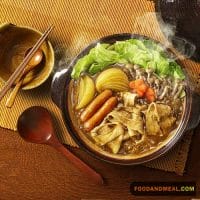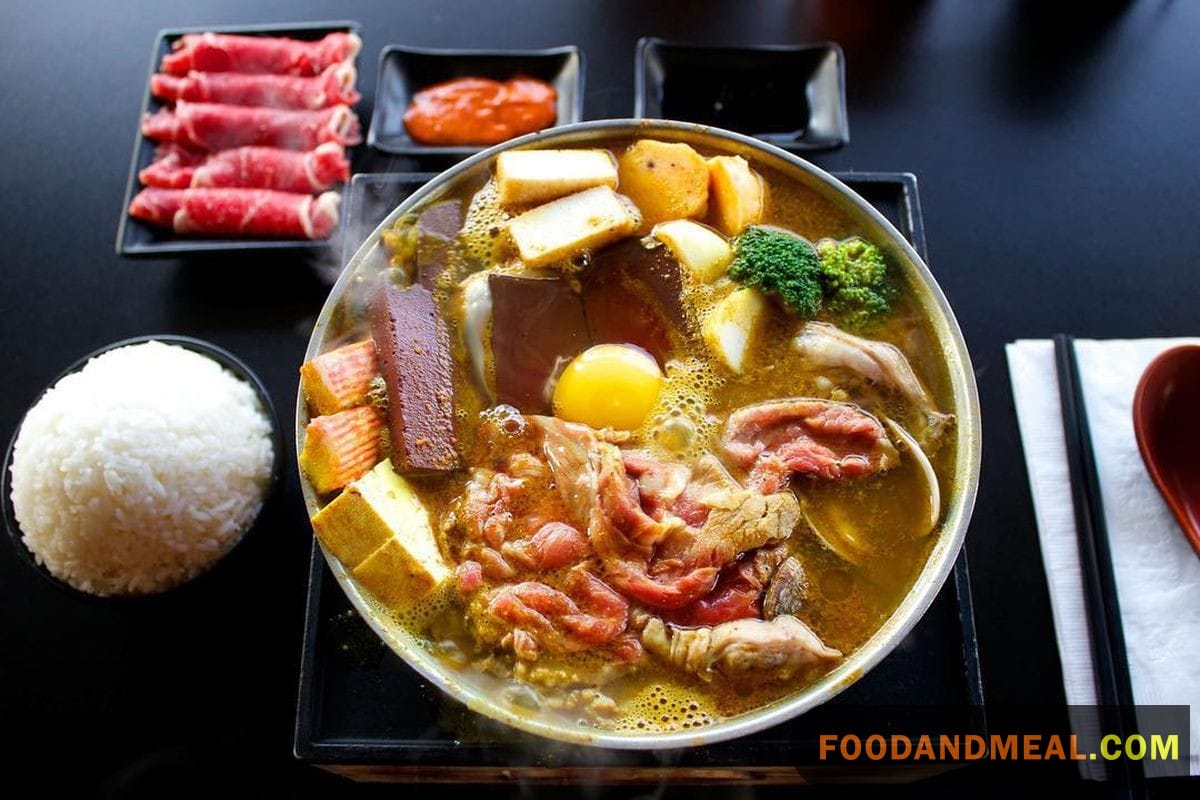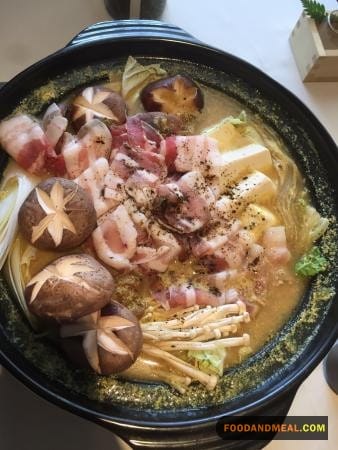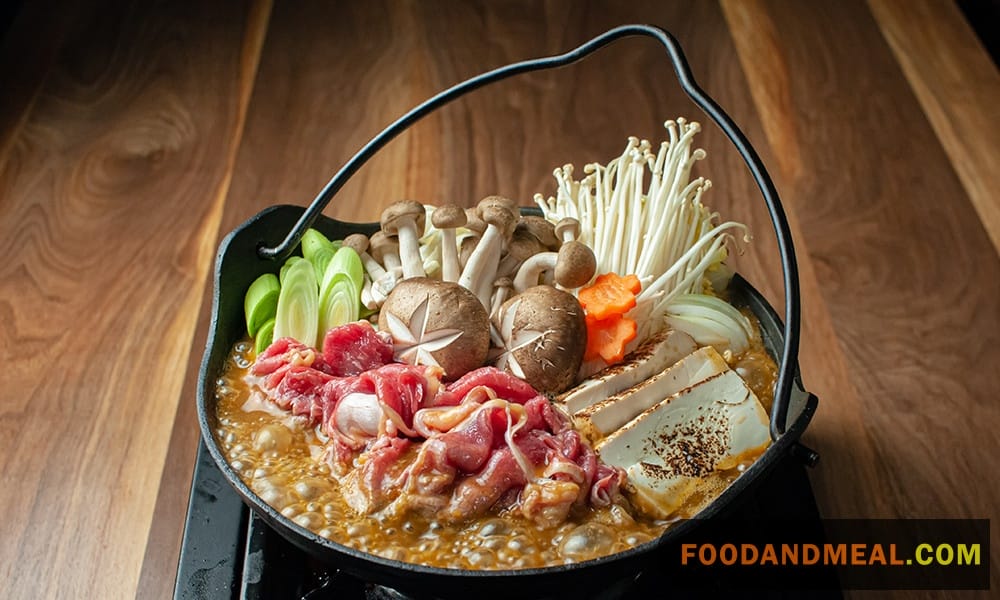Growing up, my mom would often make a delicious curry pork hot pot that was a family favorite. As I got older and moved away from home, I found myself craving that nostalgic dish. So I decided to try my hand at recreating mom’s recipe.
After some trial and error, I finally perfected my own take on curry pork hot pot that is hearty, comforting, and full of flavor. As I was developing the recipe, memories came flooding back of my family gathered around the dining table, faces glowing from the steam, eagerly digging into the fragrant curry broth.
I now love making this dish whenever I’m having a bad day or just need some warmth and comfort. The complex layers of flavor and spice perfectly capture the emotions I associate with mom’s cooking. I find myself tearing up sometimes when that first whiff of curry and pork hits my nose. It’s amazing how food can be so transportive.
I hope this recipe brings back happy memories for some and creates new ones for others. If you give it a try, let me know what you think! I’m always eager to hear others’ experiences with food, family, and the emotions they evoke.

Japanese Curry Pork Hot Pot Recipe

Curry Pork Hot Pot
Equipment
Ingredients
Ingredient List:
- 3 1⁄2 oz. of store-bought curry roux, Japanese – available online
- 34 oz. of water, filtered
- 3 tablespoons of 3x concentrated Mentsuyu soup base –
available online
- 1 2x2-inch square sheet of seaweed, Kombu
Additional Ingredient List:
- 1⁄4 head of cabbage, Nap
- 1 block of tofu, firm
- 10 1⁄2 oz. of beansprouts
- 2 leeks, Japanese
- 3 1⁄2 oz. of carrots
- 10 1⁄2 oz. of thinly sliced pork
Instructions
- Soak Kombu in water for 20 minutes or so, then turn heat on. Bring to simmer.
- When mixture simmers, add mentsuyu and curry base. Simmer on med. to dissolve curry roux.
- Add veggies and allow to begin cooking.
- Place on a hot pot burner on table.
- Have diners use skewers or chopsticks to dip their slices of pork into hot soup to cook. Ladle soup into their bowls (or let them do it).
Video
Notes
- Pro Tip: Always use fresh ingredients. The quality of your pork and spices makes a world of difference. And remember, patience is key. Let the pot simmer to perfection. If this recipe warmed your heart, share the love and don't forget to subscribe for more dishes from my kitchen diary!
- Chef's Note: Balancing the curry is an art. Start with a subtle amount and adjust as per your taste preference. The beauty of this dish lies in its adaptability. Loved this Curry Pork Hot Pot? Share the recipe with friends and family and join our community by subscribing!
- Reminder: A hot pot is best enjoyed with loved ones. So, gather around, share stories, laugh a little, and savor every bite. If this recipe added warmth to your day, spread the cheer! Share it and subscribe for more heartfelt recipes from my culinary adventures.
Nutrition
© Food And Meal
This website provides approximate nutrition information for convenience and as a courtesy only. Nutrition data is gathered primarily from the Spoonacular Database, whenever available, or otherwise other online calculators.
Curry Pork Hot Pot Using a Pressure Cooker
To create a flavorful Japanese pork and vegetable hot pot, start by searing pork pieces in a pressure cooker to lock in savory goodness. Pour in dashi, soy sauce, mirin, and sake, stirring gently for a delicious broth. Layer mushrooms and veggies without stirring for even cooking. Cook under high pressure for 15 minutes and perform a quick release to retain vegetable texture. Add harusame noodles to the residual heat for swift cooking. Serve in bowls, ensuring a perfect blend of pork, veggies, and noodles, accompanied by Ponzu dipping sauce for a customized dining experience
Cooking Tips

Cooking up a pot of curry pork hot pot truly nourishes the soul. As the aromatic spices permeate the kitchen, I’m transported back to childhood gatherings around the family table. There’s something magical about a simmering pot bringing people together.
I’ve learned a few tips over the years that take this dish to the next level. First, blooming the spices and onions in oil deepens the flavors tremendously. Let them dance in the pan for a few minutes to release the essential oils. Also, braising the pork in the curry broth makes it fall-apart tender. Resist the urge to constantly stir it so the meat can soak up all that goodness.
When building layers of flavor, don’t be shy with the fish sauce and lime. They add the perfect salty, sour punch against the rich coconut milk. And while heat is subjective, I think just a kiss of chili makes the curry broth sing.
Most importantly, enjoy the process and the people it feeds. Laughter over steaming bowls of curry pork hot pot is the best seasoning of all. Savor the memories as much as the meal.
Serving Suggestions

Begin the culinary journey with the aromatic Curry Yakisoba, which effortlessly embraces the comforting essence of curry in a delightful noodle creation. Continue with the soul-soothing Sui-Gyoza Soup, where dumplings float in a clear broth, offering a comforting touch to the overall meal. The rich and creamy Tonkotsu Ramen adds a diverse noodle encounter, while the Vegetable Maki brings a refreshing balance to the robust flavors of the hot pot. As you explore these diverse dishes, don’t forget to savor the succulent Teriyaki Shrimp, imparting a delightful seafood contrast. Together, these carefully chosen recipes create a symphony of flavors and textures, transforming your meal into a personal journey of culinary delight and satisfaction.
FAQs of Curry Pork Hot Pot

- Can I use a different type of meat for the Curry Pork Hot Pot?
Certainly! While pork is traditional, you can substitute with chicken or beef. Adjust the cooking time accordingly, especially if using beef. - What if I don’t have harusame noodles?
No worries! You can use rice noodles or even udon as a substitute. The idea is to have a noodle that complements the rich curry. - How spicy is this dish?
The spiciness can be adjusted to suit your palate. If you’re making it for the first time, start with less and build it up to your liking. - How do I store leftovers?
Leftovers can be stored in an airtight container in the refrigerator for up to 2 days. When reheating, ensure you do it over a low flame to prevent the meat from becoming too tough. - Can I freeze the Curry Pork Hot Pot?
It’s best enjoyed fresh. However, if you must freeze, avoid freezing the noodles. Store the curry and noodles separately, and when you’re ready to enjoy, reheat the curry and cook fresh noodles to add in.
Conclusion
Curry Pork Hot Pot is a delicious one-pot meal that is perfect for cold winter nights. This blog post on the Food and Meal website walks readers through how to make this hearty and warming dish step-by-step.
To conclude this recipe post, it would be helpful to include a brief summary reminding readers of the key steps . You could also include some serving suggestions or ideas for possible recipe customizations to spark readers’ creativity. Finally, a call to action encouraging readers to try the recipe and share feedback would wrap things up nicely
Hi! I'm Nazia of ‘Nazia Cooks’, a self-taught baker and cook residing in Chennai. Rooted in the rich South Indian culinary landscape, my palate has expanded to embrace global flavors. I revel in crafting fusion dishes, melding traditions to birth unique tastes.


